
15 minute read
Food & Drink
Heather Brown is a member of the Guild of Food Writers and a home economist with a passion for Dorset’s brilliant foodie scene. Heather runs Dorset Foodie Feed which helps to champion Dorset’s food and drink businesses, as well as working with clients to recipe test, write food based copy, help foodie businesses with their online presence and make food for digital content.
IG: @HeatherBrownUK
Advertisement
Hot Cross Bun Bread & Butter
Pudding by Heather Brown
There is a risk that we are all so giddy that we now have the chance to meet a whole 5 other people outside that we over ordered our treats this Easter weekend.
Should that be the case, I have rustled up a delicious bread and butter pudding using up all your leftover hot cross buns.
The basis of a good bread and butter pudding is simply some kind of bread, sugar, butter and a custard mixture. You can use all kinds of bread (from your homemade sourdough to an enriched brioche or Panettone) - the secret to a delicious pudding is the custard, and giving the pudding a chance to soak in all that custardy goodness before baking. I recommend indulging in some good quality milk and cream, and you can’t get better than direct from your local farmer from one of the many milk vending machines across Dorset. You can find your local milk vending machine using Dorset Foodie Feed’s Directory - just pop in your postcode, and select ‘milk vending machine’.
If you have dairy intolerances then I recommend substituting the milk with a good quality oat milk and cream. Oatly also offer an excellent vegan friendly vanilla custard if you are trying to remove the eggs too (most supermarket hot cross buns are now vegan friendly). I haven’t added any extra dried fruits or spices to this recipe as my hot cross buns were fruity enough. To make this recipe with other types of
leftover bread, then simply add some dried fruit in amongst the layers and sprinkle 1tsp of cinnamon across the top.
Ingredients
• 300ml full fat milk • 100ml double cream • 4 egg yolks • 75g golden caster sugar • 50g to 100g butter • 1tsp vanilla extract • zest from a lemon • 6-8 hot cross buns
Method
1. In a large jug, whisk together the milk, cream, egg yolks, half of the sugar, lemon zest and vanilla extract until combined. 2. Cut the hot cross buns in half as if you were going to toast them, then cut the hot cross buns in half again, top to bottom (through the cross). Butter each side of the hot cross bun pieces. 3. Place them all into an ovenproof dish, squished up against each other. You want to choose a dish that doesn’t leave much space (the dish I used was about 25cm square). 4. Pour over the custard mixture. Make sure the mixture gets in all the spaces in the dish, wiggling the pieces to make sure the custard is underneath too. 5. Leave the pudding to soak up the custard for at least 30 minutes. 6. Preheat the oven to 180 fan/gas 5. 7. Sprinkle over the pudding the remaining sugar and add some more little pieces of butter. 8. Half fill a roasting tin with boiling water and place your pudding dish into the water (make sure the water doesn’t go over the top of the pudding dish). Place them both into the oven and bake for about 40 minutes until the top of the pudding is golden and puffed up (the layers will shrink down a little when it cools). 9. NB. The hot water gently and evenly cooks the custard but you can leave out this step if you wish 10. You can serve this hot from the oven with more fresh cream or leave to cool and cut into pieces like a cake.
Celebrating North Dorset’s Chocolate Industry.
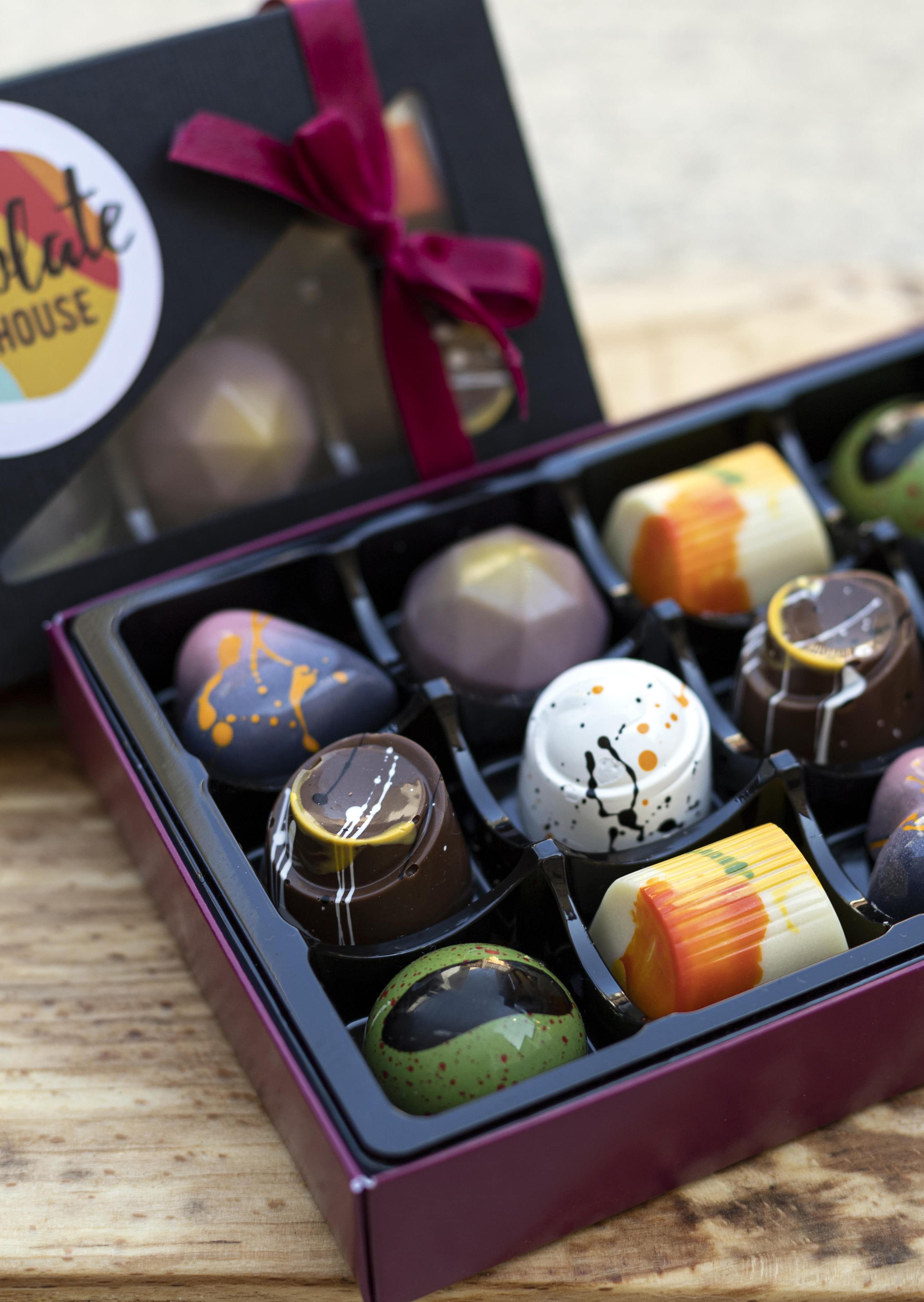
A box of 12 individually hand painted luxury chocolates from Chocolate Arthouse
by Rachael Rowe
The art of making chocolate from cacao is a delicate one as I discover when arranging to speak with Sherborne based Solkiki.
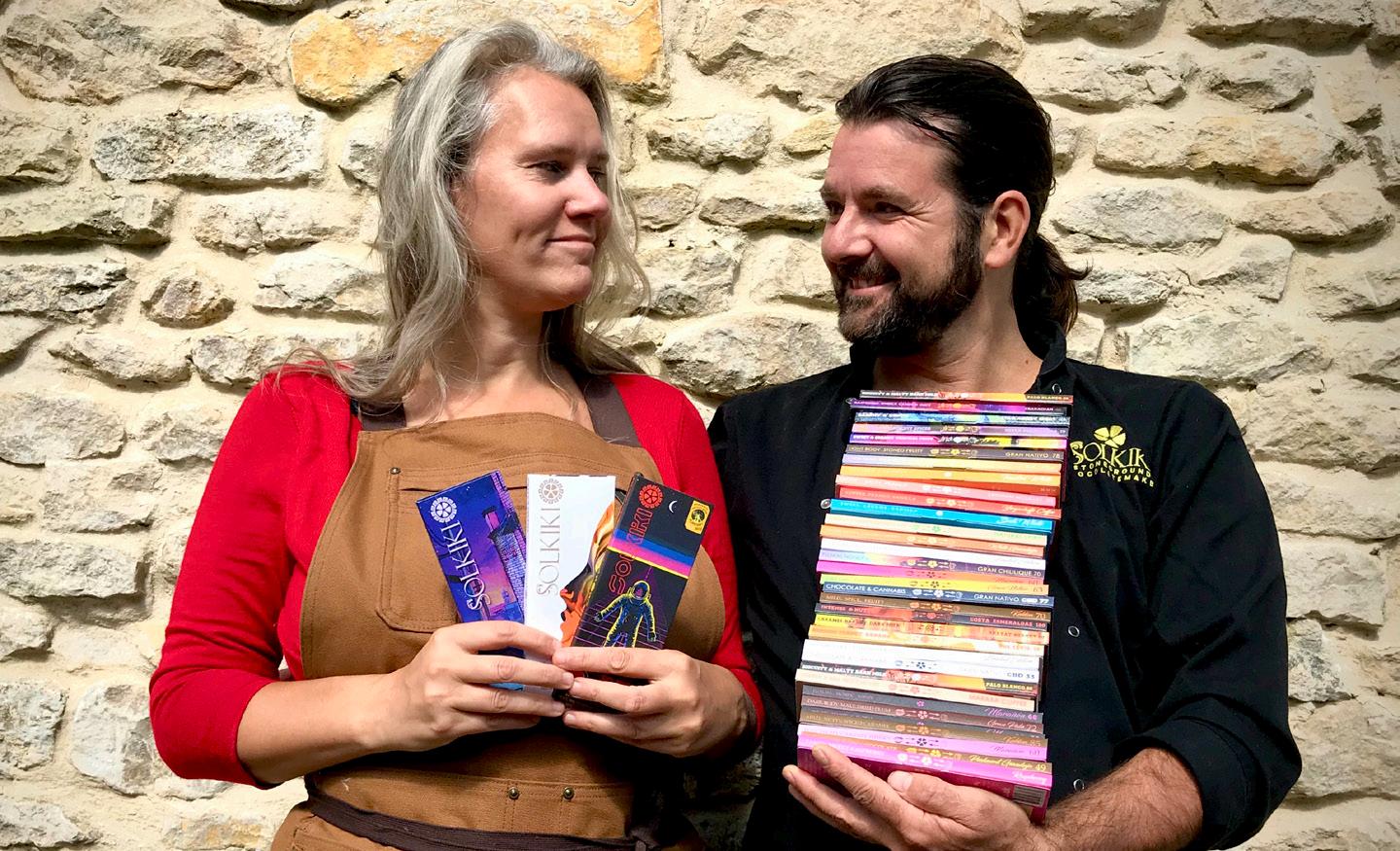
Owner Bob is working wet chocolate which sounds like a chocoholic’s dream, but he cannot be interrupted. Liquid chocolate is not always predictable and needs attention as the chocolate makers get creative with cacao.
Bob and Iris Solkiki are awardwinning Dorset chocolate makers and one of the few microbusinesses that craft a product from bean to bar. Since 2016 they have won over 120 national and international awards.
They first got into chocolate when Iris was pregnant and wanted a dairy-free bar. She was unable to find anything in the shops and when Bob brought some bars back from the USA she was blown away by the quality.
That moment inspired them to start making their own chocolate, sourcing the finest ingredients possible and Solkiki was born. All the chocolate is organic, vegan and dairy-free. Iris says:
I’d second that as I sample their award-winning Costas Esmeraldas 64 made with cacao from one of the world’s best producers in Ecuador. Their white non dairy chocolate has won awards when competing with dairy products. world. The couple explains: “A lot of our beans come from Peru but we also buy from Mexico, the Philippines and India. Although we look for the best producers in the world, they frequently find us.” I was fascinated to learn that in India cacao beans are traditionally grown alongside other spices such as cardamom and black pepper. Bob and Iris emphasize the importance of ethical working and traceability. “So many plantations use child labour and we look out for that. We also price our chocolate so the farmer gets a fair price.”
It can take anything from three to seven days to make chocolate from the beans. The production from roasting to tempering and making bars is done at the workshop just outside Sherborne. Solkiki sells its chocolate online globally with a customer base including Michelin star restaurants and specialist food shops. “We sell to Seattle and Singapore, but not so much to Sherborne,” laughs Bob. Perhaps that will change.
Bob and Iris Solkiki with their range of award-winning bean-to-bar chocolate. They have won over 120 national and international awards in the last five years.
A chocolatier is different from a chocolate maker in that they create chocolates. When it comes to Chocolate Arthouse in Sturminster Newton, the artistry is eye-catching. Claudia Foot has run the business since 2019 and loves to put her own touch on the chocolate flavours and designs. The chocolate stilettos (yes - you read that correctly) look startlingly realistic in a range of colours and far too elegant to start nibbling a heel.
I wondered how she gets such interesting fillings like banoffee or apple crumble and discover her family have a lot of influence.
“They bully me and say - make one like this,” laughs Claudia.
She uses two types of chocolate. Belgian chocolate is used for its smoothness and is then blended with Colombian to get the flavour. She’s hoping to develop a vegan range later this year. Claudia’s chocolates are a three-day process to make from painting the shells to making the ganache and finally packaging. She sells online and at retailers in North Dorset including at the Woodbridge Farm Pop Up Shop where she works.
Having discovered this high quality local chocolate and the passion behind local businesses in the Blackmore Vale, there’s one thing for sure. Chocolate is not just for Easter but should be enjoyed year-round.
Wine, Wind & Wet Stone by Sadie Wilkins, Indie Wine Merchant, Vineyards of Sherborne
This month, we delve into the conditions of a vineyard plot and how the context of a winery can be expressed in the glass.
The word terroir is used a lot in the wine world, but what does it actually mean? Historically, the term was associated with the flavour from certain wines in ‘Old World’ regions – particularly ‘earthy’ notes. Nowadays, we use the term more specifically to refer to the elements that contribute to the ‘terroir’ of a wine, and consider them collectively as being the ‘context of the vines’. The dominant elements being: climate, soil type and aspect (terrain) – all of which impart something into the ‘end product’.
It’s this ‘expression’ of the vineyard that’s exciting for those of us who like a glass of vino; not only can a glass of wine transport
Weinhof Waldschütz Grüner
Veltliner, Kamptal, Austria, £14.
This Grüner Veltliner is produced in the Kamptal wine region in Austria, whose name is derived from the River Kamp. Weinhof Waldshütz say ‘the soil carries its history into the wine cellar… the mineral spice of the primary rock, with the fine fruit and fragrant nuances of the loess soil’. For me, it’s a fresh, crisp, mineral Grüner, that feels like I’m drinking from a natural spring – of wine! Delicious. us to a region within seconds of its aroma hitting our nostrils, but it’s also quite fun to take a grape variety and compare how is behaves in different contexts and what that means for your palate.
Although you can only work with what nature has given you, some vineyards spend a lot of time, and money, in fully exploring the terroir of their vineyard, and the plots they have access to within their region, in order to maximise the quality of their viticulture and inform their winemaking.
More and more have scientific teams on hand, including geologists and experts, who use a variety of methods – both traditional and top spec modern tech – in order to study the soil, climate and aspect with a view to producing interesting and quality wines.
Just last week, I was fortunate enough to be part of an online
Agustín Lanús Sunal Ilógico
Malbec, Calchaqui Valley, Argentina, £22
In 2006, Agustín Lanus travelled to the extreme heights of the Calchaqui Valley to learn about the micro-terroir found at extreme altitudes (16503100 meters above sea level). In his words, ‘many say that riding 9 hours into the mountains on dangerous dirt roads to check on grapes is crazy, but then they try the wine and they understand’. I could not agree more. This is Malbec on a whole new level - literally! tasting with Bouchon Family Wines, who are one of the most innovative and forward-thinking vineyards in Maule, Chile; they have undergone an extensive scientific soil study to produce some of the most thrilling wines you will find from Chile – a wine country that has always been known for great value, but is now shaking up the equilibrium and producing some absolutely exquisite wines.
For Bouchon, the focus is in the unique granite soil, which has evolved with volcanic influence over the years.
The tasting was an education and involved diagrams, heat maps, talk of magma chambers and intrusive rocks, but, most importantly, delicious wine that oozed minerality from this granite-fuelled location.
It’s inspired me to pick out a handful of wines that I really feel showcase the effect of terroir in the glass:
Bouchon Family Wines Granito Semillon, Block 1 Batuco, Maule Valley, Chile, £32
I had to include the standout wine from their fascinating tasting last week. We immediately ordered stock and it arrives this week. This wine is simply exquisite. Tim Atkin MW has dubbed it the best white wine to have come out of Chile. The elegant, clean-drinking, smooth mouth-feel that you get from this often underrated grape variety is phenomenal, and a true reflection of its granite-influenced terroir.
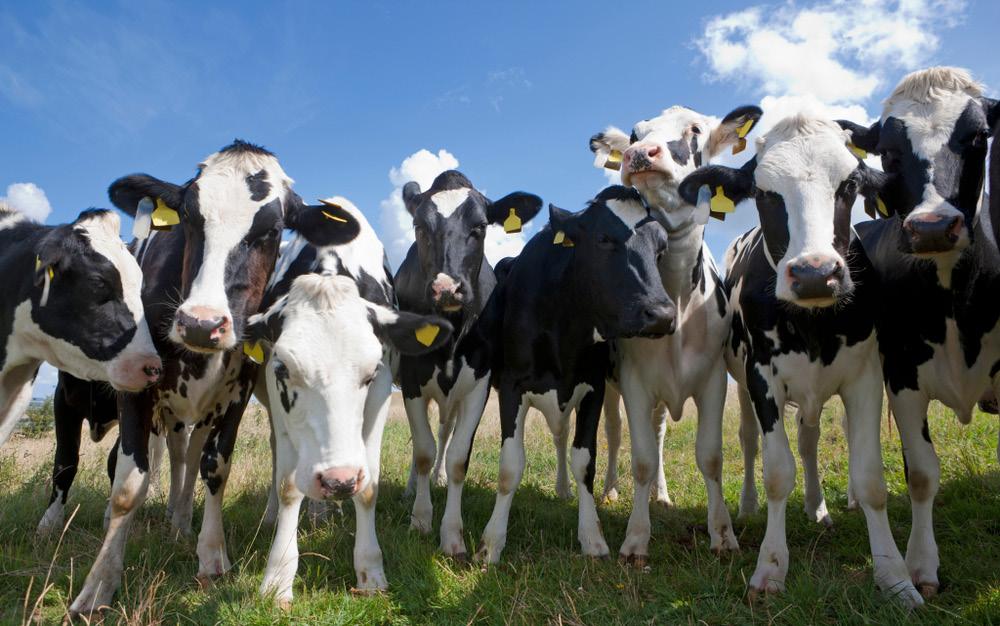
Notes From An Epicurean
Spring is here at last, the clocks have changed, lighter nights and warmer weather are on their way and less restrictions as we head to the end of lockdown.
Spring is also the time when the cattle are let back out into the fields after being kept in during the winter. This is to protect the land when it is wet, and it is easier to feed the stock inside with winter rations and sileage while waiting for the new growing season. When I was farming it was a wonderful sight each spring to see large cows leaping and gambolling around a field like lambs when first let out; sadly ever larger numbers of cows are now kept inside all year round as herd sizes increase with the economies of scale demanded of modern farming. The spring flush of milk, as it is known, occurs when the cows go back out on grass. The increased production changes the composition of the milk, generally les butterfat and protein, and this has a knockon effect for anything produced from the milk.
If one compares a cheese produced at different times of the year it is possible to detect a slight change in flavour, unless, of course, if the cows are kept in away from grass where it is possible to manage their diet to keep a level profile all through the year.
Smaller, artisan producers like the challenges of the changes in milk through the year, whereas the massproduced cheeses will be trying to replicate
the same flavour all through the year.
The supermarket buyers will want to know the product is consistent.
The soft cheeses made from the spring milk take less time to mature. They will be reaching the shops in about 3 months, the hard cheeses, like cheddar, can mature for 12 months and more and so one needs to know the age to aid the taste profile one might expect.
Generally, the best cheese comes from the summer milk after the first flush is over and the cows have settled onto the diet of grass.
Hope everyone has a wonderful Easter, hope the egg hunting goes well!
Simon Vernon Food consultant & Great Taste Awards Judge

He Sells Seashells from the Seashore... Portland Shellfish
Greetings from sunny Portland!
As I write this we are just preparing to exit our third lockdown - coupled with the aftermath of Brexit I think it’s fair to say that it’s been an
interesting few months
to say the least.
Our family Shellfish business will be celebrating its Silver Jubilee next year, by then we hope to have fully reopened, adapted and fine-tuned our offering. A year ago, as far as I was concerned Zoom was a song by Fat Larrys Band and lockdown was something that only the naughty boys at HMP Verne enjoyed on the island, what a difference a year makes!
What we have seen is that once “time poor” people who always shopped at supermarkets have either chosen or had to perhaps look to source their food both more locally and from smaller retailers.
This has been an amazing year in that respect as we Brits are very resourceful people. A lot of our wholesale customers around the country have altered their businesses to offer both takeaway menus and in many cases ‘home meal kits’ which can be either prepared or finished off by following a simple menu card. The Shellfish that we source in Dorset is not only top quality, but it is responsibly fished and from a sustainable source. The problem in the past is that sadly as an island nation our appetite for both wet fish and Shellfish just does not match that of our European friends - consequently a lot of our catch goes abroad. I hope that the quest for more knowledge and questions about provenance and sustainability will arise regarding the vast diversity of fish and shellfish on offer, and will become the building blocks for a greater appreciation and understanding of the bountiful catch on our doorstep.

Did you know that brown crabs this big are caught off the Dorset Jurassic Coast?! There’s Dorset Blue Lobster, Fresh Hand Picked White and Brown Crab Meat, Cockles, We are proudly Oysters and Clams from Poole supporting the Love Harbour to name but a few. Local Trust Local We have also for the first time movement as we opened an online shop in the believe that Dorset hope that the interest generated is a truly wonderful by trying our products will lead to a greater appreciation and - and in many cases enjoyment of Dorset Shellfish all undiscovered - larder. year round and UK wide.

Over the next few weeks we expect there to be a very strong and rapid return to trading as the Hospitality sector reopens. There will be many people eager to catch up with not only friends and family, but the cancelled birthdays, weddings and other missed celebrations of the last year. We know that the local Hotels, Pubs and Guest Houses are going to experience a Summer like probably never before. What a wonderful opportunity to showcase our amazing Shellfish!
I’ll sign off now as there’s a Crab boat needs unloading!
Tim Assirati Portland Shellfish Ltd
Do You Remember Elizabeth Frink?
In 2019, Messums Wiltshire rescued Frink’s studio from Woolland, Dorset and in 2020 the studio was rebuilt as part of an exhibition in the historic Tithe Barn at Tisbury.
Many of her other possessions are now being catalogued by the Dorset History Centre to form part of their archive.
Elisabeth Frink was a sculptor who worked predominantly in bronze at the age of only twentyby the Tate gallery. Her work focuses on men, dogs, horses, and birds as her primary subject matter, she rarely worked with the female form. An exemption to this Walking Madonna, which resides outside of Salisbury Cathedral. Other public work in South West includes the Dorchester Martyrs, in Dorchester and Horse and Rider in Winchester.
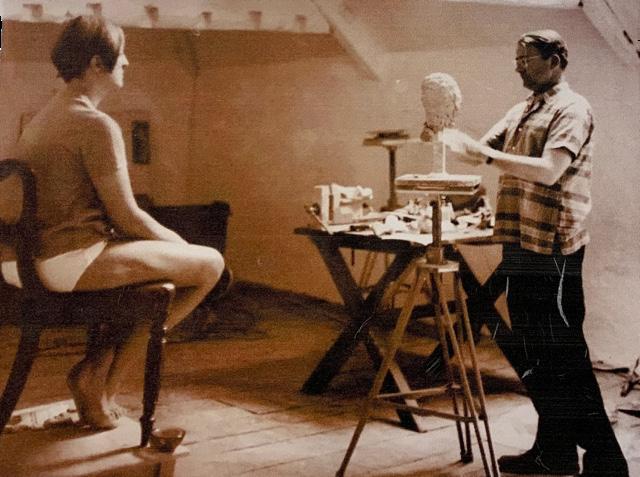
Since the purchase of the Woolland studio, Messums has begun amassing an online archive of objects, photographs and stories related to Elisabeth Frink.
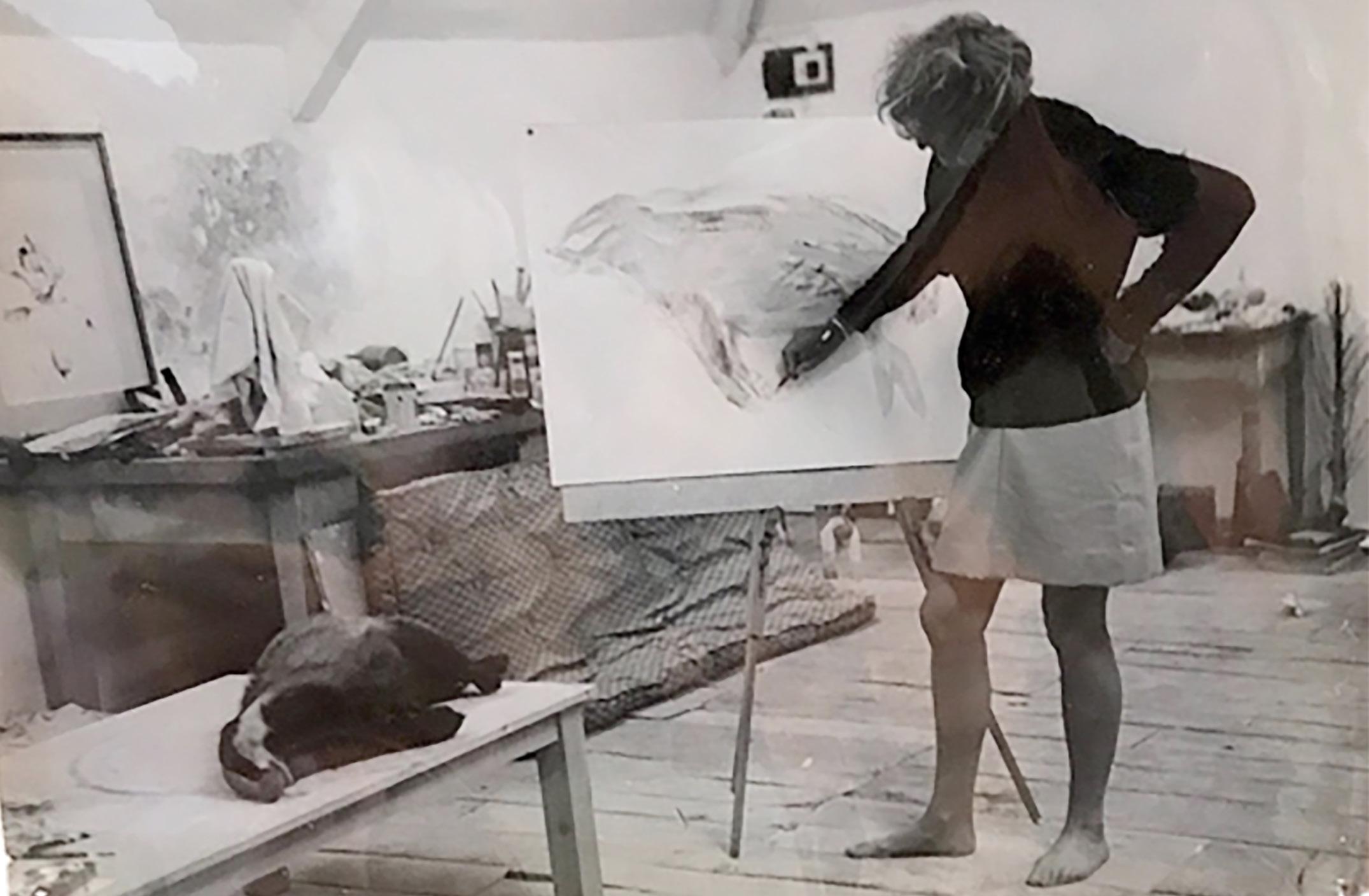
So far we have had photographs by the fashion photographer Norman Parkinson of Frink in her London studio which were featured in Life Magazine. We have also spoken to a family who recall finding a dead badger and then keeping it in their freezer until Frink next visited so that she could draw it.
Each addition to the archive gives us insight into what a wonderful and bizarre woman Frink was.










